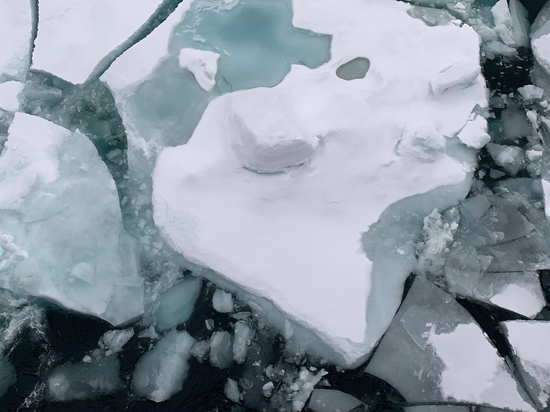Russian scientists will reveal the secrets of the ancient atmosphere with the help of Antarctic ice
[ad_1]

The ancient atmosphere sealed in the Antarctic depths, that is, ice over a million years old, is being studied by Russian scientists from the Arctic and Antarctic Research Institute. The members of the 68th Russian Antarctic Expedition (RAE) who returned on the eve of March 8, among them several beautiful polar explorers, told about what secrets of the ancient atmosphere it can reveal. Correspondent “MK” learned the details.
Programs for the study of the so-called atmospheric Antarctic ice are being carried out as part of a comprehensive study of the paleoclimate and subglacial Lake Vostok. According to the core – ice samples obtained from a well during drilling – scientists study the paleoclimate of the Earth in the area of the Russian Antarctic station “Vostok”.
In previous years, polar explorers extracted core samples 400,000 and 600,000 years old. This year, in February, they successfully drilled to the border of atmospheric and lake ice, stopping just over 200 meters from its surface. Atmospheric ice was extracted from a depth of 3535 meters.
“The ice that is mined over Lake Vostok is interesting in that we can consistently study all the time epochs, as if sealed in it,” says Aleksey Ekaikin, a leading researcher at the AARI. – The last samples will reach our institute, located in St. Petersburg, only by the beginning of summer. Now we are examining last year’s samples, which were delivered in August last year.
Now scientists can only operate on data obtained from a 400,000-year-old core. They want to find out how temperatures and greenhouse gases have changed.
“We now know that ice ages lasted 100,000 years each, and between them there were so-called interglacial periods, 15–20,000 years long,” Yekaikin says. “We are currently living in such an interglacial, warm period, which is also characterized by additional anthropogenic warming.
— That is, the previous interglacial periods were colder than ours?
— No, the average temperature of the previous interglacial was about 1 degree warmer than it is now. But the temperature, due to the current concentration of greenhouse gases, is growing so fast that after some time, if this trend does not change, we will be warmer. It is possible that under such a scenario, we may not have another ice age in about 10 thousand years.
– How much, according to your data, were greenhouse gases 100 thousand years ago?
– In the cold era, the level of CO2 was 180 parts per million, in the interglacial – 280 parts per million. And now, for comparison, we have 420 parts per million, that is, one and a half times more than in previous warm eras.
– What was the temperature in Antarctica in previous periods?
– During the cold period, the average annual temperature was -65 degrees, in the warm period -55 degrees. Now we have -56 so far, but, as I said, we are in the middle of a warm period, and if the release of greenhouse gases into the atmosphere continues, we will approach the temperature that was 100,000 years ago.
– Do you calculate all this from a core lifted from a depth?
— Yes, according to its isotopic composition.
– Do you find living creatures there?
“There is nothing in the atmospheric core. We extract it in the central part of Antarctica, and therefore even terrestrial dust cannot reach there. Bacteria and viruses, even if they enter, soon die. Purely theoretically, interstellar dust can be found in the Antarctic core, but it is, perhaps, even less than the terrestrial one.
— What surprises do you expect from a million-year-old core?
– At that time, the climate on Earth was being restructured – its warm and cold periods began to alternate not after 40 thousand years, as before, but after 100 thousand years. Therefore, there could be more greenhouse gases in the atmosphere.
Meanwhile. On March 6, the Federal Service for Hydrometeorology and Environmental Monitoring launched the construction of the Ivan Frolov research expedition vessel. It will become part of the fleet of the Arctic and Antarctic Research Institute. As its employees explained to us, the new vessel is necessary for the smooth operation of Antarctic expeditions. For example, in the future, scientists would be interested in getting to the depths of ice over 2 million years old.
[ad_2]
Source link








